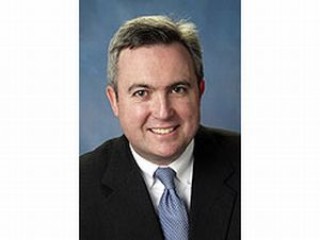
Edward Fanning biography
Date of birth : 1848-03-16
Date of death : 1917-11-30
Birthplace : Sydney, New South Wales, Australia
Nationality : English
Category : Famous Figures
Last modified : 2011-03-24
Credited as : Company director, businessman, general merchant
0 votes so far
Edward was educated at Eton and Trinity College, Oxford (B.A., 1870), and won distinction as an athlete.In 1871 Edward joined the Melbourne branch of Fanning, Nankivell & Co., a Reading mercantile firm of which his father was senior partner. Tall, handsome, witty, charming and rich, Edward was welcomed by Melbourne society. He played for the Melbourne Cricket Club, followed the Melbourne hounds and bred greyhounds with which he later won the Tasmanian Plate and Great Southern Cup. An accomplished whip, he aroused admiration when he drove his tandem along St Kilda Road and was much in demand to school horses until a bad fall almost killed him.In the mid-1870s Fanning, Nankivell & Co. invested in the Queensland sugar industry. The firm bought Gairloch, 4600 acres (1861 ha) in the Herbert River area, and spent over £120,000 on the plantation. In September 1882 Macknade, 6856 acres (2775 ha) with a successful history, was bought from the Neame brothers for £60,000, half paid in cash, the rest remaining on mortgage. Hamleigh plantation was soon added to Fanning, Nankivell & Co.'s holdings. In 1885 the Neames in England had word that 'things were not going at all well at Macknade' and in 1886 Frank Neame sailed to Melbourne. Fanning refused Neame's partnership proposal as the firm had already lost £200,000. Macknade was therefore handed over as it stood in lieu of money owing. Gairloch was put up for auction in Melbourne but no buyers came forward and it was sold in lots for only £20,000. Arthur Neame considered over-extension the causes of Fanning, Nankivell & Co.'s failure. Inefficient managers, unsuccessful experiments with Javanese, Sinhalese and Chinese labourers, the low price of sugar and bad seasons contributed to the disaster which was by no means confined to this firm. One bright spot for Fanning in these troubled years was the amendment of the law on marriage with a deceased wife's sister. In 1874 he had married Constance Emily, daughter of David Moore, but she died of pneumonia soon after the wedding. His wish to marry her eldest sister Kate was not realized until 4 November 1885. Fanning, Nankivell & Co. reorganized at the end of the 1880s and as Fanning & Co. continued to ship tea, sugar, ginger and spices to Australia.
The depression of the 1890s brought further financial difficulties but Fanning managed to avert ruin, and although he was never wealthy again, 'his own integrity and utter morality in all things led him to positions that gave him financial security'. He was a trustee of Edward Wilson's estate, and chairman of the Equity Trustees Executors and Agency Co. which he helped to found, and of the Agency Co. which he helped to found, and of the Australian board of the New Zealand Loan and Mercantile Agency Co. He was a director of the London Bank of Australia, the Carlton, United and Castlemaine Breweries, the East Greta Coal Co., New South Wales, the Colonial Mutual Life Assurance Co. and the North British and Mercantile Insurance Co. He was a member of the Children's Hospital committee and a trustee of the Alexandra and Melbourne Clubs and president of the latter in 1915.
A devout Anglican in his youth, Fanning was impressed by rationalist doctrines but continued to attend church. He remained a crack shot and excellent billiards player, and a great joy in his old age was listening to his large record collection on his trumpet gramophone. He died at his home, Cooramin, Westbury Street, East St Kilda, on 30 November 1917, survived by his wife, two sons, Rupert and William, and one daughter, Beryl.
















